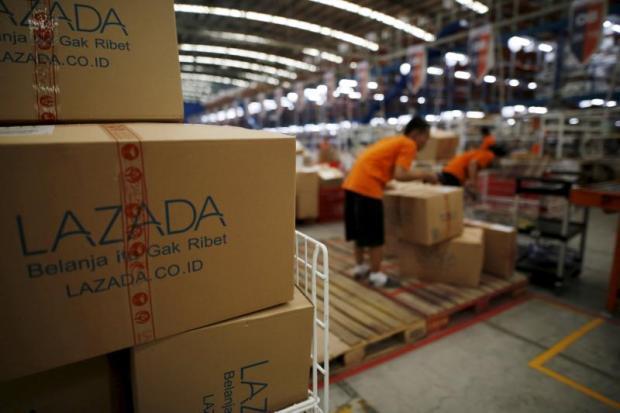Asean the ‘next frontier’ for e-commerce boom
E-commerce in Southeast Asia is ripe for fast-paced growth scenario given the region’s huge population and growing middle class, but countries need to address existing challenges to help the business reach its full potential, says a Google executive. Southeast Asia is a “hotbed” for mobile internet with about 130 million people now using smartphones out of a total population of around 630 million, said Marc Woo, industry head for e-commerce, travel and financial services at Google.
In hindsight, he credits AirAsia with starting “the first wave” of e-commerce in Asean as the pioneer in booking of air tickets via its own website, without collaborating with travel agents. Purchasing movie tickets through online platforms has been a very popular second-wave application, he added.
About 60% of people in Asia Pacific accounted for 40% of global e-commerce sales in the first quarter of this year, he said. Major markets include China and India by virtue of their sheer size, and South Korea, Japan and Australia by virtue of their high purchasing power.
“China is at the peak at the moment, with the majority of sales happening through the mobile web and mobile applications,” said Mr Woo. “India is hugely dominated by a couple of large players — Flipkart and Amazon. Japan and Australia are hugely mature markets, probably more mature than the UK and the US in terms of e-commerce penetration and e-commerce savviness by consumers. This really leaves us with Southeast Asia as the next frontier.”
The recent purchase by the Chinese giant Alibaba of Lazada, the largest Southeast Asian e-commerce site, in a deal worth UScopy billion, shows how important Southeast Asia is becoming to major players seeking more sales and growth.
“With the rising middle class, a hugely connected population, as well as a lot of challenges to solve, [Southeast Asia] has the largest headroom in Asia Pacific,” said Mr Woo.
In 2009, 30% of the world’s middle class lived in Asia and it is projected that over two-thirds of the world’s middle class will be in Asia Pacific by 2034, he said. A rising middle class theoretically contributes to a more mature economy, higher disposable income, and digital sophistication.
Google Southeast Asia recently conducted research with Singapore-based Temasek Holdings on business-to-consumer e-commerce in Asean. At least 6% of all retail sales in 2025 are expected to occur through e-commerce, according to the research.
“The top line is this: in less than 10 years, what we see is that internet users [in Asean] will triple to 600 million from the current 200 million,” said Mr Woo. “And when it comes to the total size of this sector, what we have projected is that it will reach up to $88 billion in retail e-commerce gross national product.
“Bear in mind that this is only business-to-consumer, not consumer-to-consumer and business-to-business as it is difficult for us to assess those.”
As the research has identified, funding is a crucial key for success, said Mr Woo, citing Amazon’s expansion into Southeast Asia starting with Singapore, and how Indian e- commerce companies have received huge cash injections from Alibaba and Japan’s SoftBank.
But logistics still presents a crucial challenge for e-commerce development in Asean countries, excluding Malaysia and Singapore, as the high cost of delivering goods, especially in countries such as Indonesia, makes it harder for online sellers to offer the low prices consumers crave.
Digital payment systems are also a challenge. In the Philippines and Vietnam, for example, fewer than 2% of consumers use credit cards. “A payment mechanism needs to bridge the whole gap, making it easy for people to insert cash and then transact online or through a device,” said Mr Woo.
“To get all these factors in place and to change consumers’ mindset, e-commerce will grow fast given the ease of transacting through mobile phones, the ease of payment, trust and security factors, quick and seamless delivery, as well as more compelling value-added services. [Asean] may not become a leader in e-commerce, but it will definitely be number one in terms of growth.”
With the exception of Malaysia and Singapore, the e-commerce business in Asia is different for each Asian country in terms of regulatory and payment issues, said Mr Woo.
“For example, if you are a business trying to penetrate China, it is extremely difficult even if you have huge capital and a good relationship with funds. It is not so much the regulations that stop this, [but] it is the consumers who are extremely picky and the fact that they want value all the time,” he said.
“All the dominant [Chinese e-commerce] players constantly innovate; it will not be the same composition five years down the road. One AliExpress employee said it is a different thing to execute every day and there is no planning whatsoever, as consumer behaviour is changing very, very fast.”
When it comes to e-commerce, consumers are not loyal “at all”, as they are constantly in search of cheaper price tags, promotions or enhanced digital experiences, Mr Woo noted.
And even though the big players, such as Alibaba and Amazon, are expanding their sphere of influence in Asia, there is still room for growth for local e-commerce businesses as seen in the likes of 11street, Lelong and Mudah, all of which have recorded healthy sales and growth.
“If you look at e-commerce as a yardstick in the long-term, there are huge marketplaces and huge horizontal players, but once that happens you will see more of the niche guys coming on board. They will only sell shoes, bags, electronics, or offer their own products,” he said.
Source: http://www.bangkokpost.com/business/news/1249798/asean-the-next-frontier-for-e-commerce-boom


 English
English




